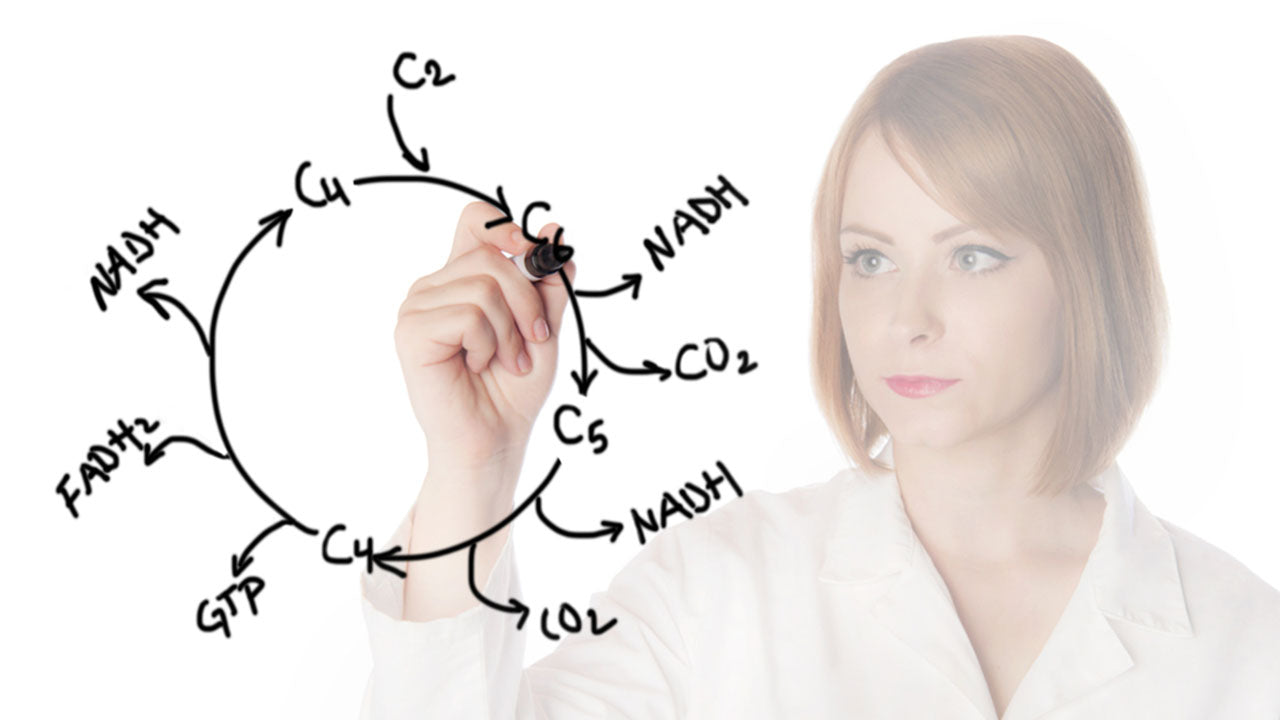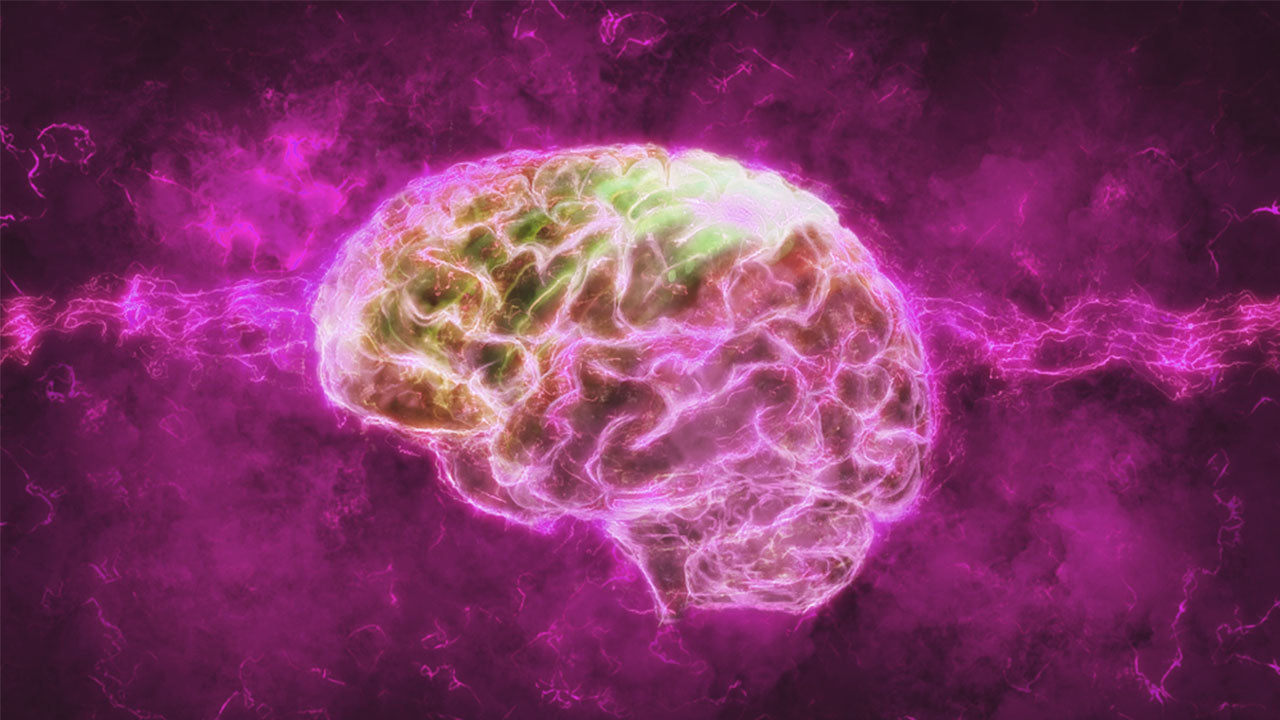What Are Hydrophilic Amino Acids?
 By: by Amino Science
By: by Amino Science

You may have run across this term and wondered what it meant—what are hydrophilic amino acids and what do they do? Hope you feel like brushing up on some basic organic chemistry, because this article's aim is to shed some light on the subject, and give you a quick chemistry refresher course on these important structures and molecules in our bodies.
Definitions
We'll start with the basics: polar molecules, hydrophilic vs. hydrophobic molecules, and the amino acids.
Polar Molecules
Polar molecules are what form when two atoms from different elements come together to make an uneven compound. One atom will be stronger and will pull negative electrons away from the other atom. That makes the molecule polar: one end is positive, with fewer electrons, and the other end is negative, hogging as many electrons as possible.
Water is a polar molecule because H2O means there's two hydrogen atoms that can then form hydrogen bonds attached to the one stronger oxygen atom: oxygen has six electrons of its own, but it can hold onto eight, and so when two unsuspecting hydrogen atoms come along, each of them having just one electron to call their own, oxygen gathers them close and insists that they share. Now oxygen has all eight of its electron spots filled. With the majority of the electrons always resting on oxygen's side of the bonded H20 molecule, water is a polar molecule, and oxygen holds the negative side of the bond, while the hydrogens hold a positive charge. Now, speaking of water molecules...
Hydrophilic
Hydrophilic means "water loving," and hydrophilic molecules are receptive to water and are likewise in the polar group of molecules. Hydrophilic molecules can bind with water, and thus they make up substances that can dissolve in water. Sugar and salt are examples of hydrophilic substances, but even the Titanic, 2 miles down at the bottom of the ocean, is slowly dissolving in water and corroding away. Water is not easy to resist.
Hydrophobic
Water is not impossible to resist, however: hydrophobic molecules resist water, repel it even, or as the name suggests, they are phobic or "fearful" of water. Examples of hydrophobic molecules are oils, fats, and lipids that will not dissolve in water.
Elementary science: put some colorful oil and water into one clear bottle, shake up it like crazy, and then watch as the oil and water slowly return to their own sides of the bottle. Oil will float to the top, and water will pool on the bottom. As hydrophilic molecules dissolve in water and are polar, hydrophobic ones will only dissolve in oil and are nonpolar.
Amino Acids
Amino acids are the building blocks of protein structures in the body and are each made up of several molecular groups. Each amino acid has a core alpha carbon atom (Cα), and attached to that is a single hydrogen atom, a carboxyl group (-COOH), and an amino group (-NH2).
If you think of an amino acid structure as a four-member band like the Beatles, the alpha carbon is their manager Brian Epstein. The alpha carbon manager then signs on (or rather peptide bonds with) Ringo, Paul, and George in a ring structure around him. Then he signs the most defining member of the band, the R group side chain, or as per our metaphor, John Lennon. The R group you can think of as the Radical group, the one that provides each amino acid with its defining functions.
Of the 20 common amino acids, all are defined by their R group's chain atoms. The nine hydrophobic amino acids are alanine (Ala), glycine (Gly), valine (Val), leucine (Leu), isoleucine (Ile), phenylalanine (Phe), proline (Pro), methionine (Met), and tryptophan (Trp). The nine hydrophilic amino acids are listed below, with the remaining two amino acids tyrosine (Tyr) and cysteine (Cys) defying categorization at this time.
Hydrophilic Amino Acids
To recap: hydrophilic amino acids are polar amino acids, they seek aqueous solutions, meaning they love water and can't wait to dive in the pool. Here are their amino acid names, with their uses and functions explained and defined.

Arginine
- Three-letter code: Arg
- One-letter code: R
Arginine is a conditionally essential amino acid. Sometimes the body is able to synthesize arginine in-house, and sometimes (in young and premature infants for example, or in extreme cases of trauma like burn victims), the body needs arginine to come from an outside source. Arginine can be found in foods such as chickpeas, nuts, soybeans, seeds, seafood, poultry, beef, and dairy products.
Arginine plays a role in strengthening the body's immune system, detoxifying the liver, promoting fertility in males, and keeping supple the skin and joints. Arginine is being researched as a treatment for cancer, AIDS, and impotence.
Asparagine
- Three-letter code: Asn
- One-letter code: N
Asparagine is a nonessential amino acid, but though we don't require it in our diet, it can still be found in seafood, eggs, beef, dairy, soy, nuts, legumes, and asparagus where it was first discovered (hence the name). Asparagine has a necessary role to play in protein synthesis and is used for ideal functioning in the human nervous system (it helps us maintain equilibrium).
Aspartate
- Three-letter code: Asp
- One-letter code: D
Nonessential, aspartate or aspartic acid is derived within the body from oxaloacetate, ornithine, or citruline. Aspartate is incredibly important in building protein molecules, and specifically vital to several other essential amino acids like threonine, lysine, isoleucine, and methionine. Aspartate is like the office administrative assistant that gets a raise every year, because the whole place would be a mess without its ongoing support.
Glutamine
- Three-letter code: Gln
- One-letter code: Q
Glutamine is a nitrogen transporter, a muscle builder, a sanitation worker (removing ammonia from the liver), and a light rail conductor, able to pass through the blood-brain barrier to assist with our central nervous system. Glutamine may have uses in mental health functioning as a treatment for depression, epilepsy, senility, and schizophrenia, as well as potential to benefit those with Crohn’s disease and other intestinal disorders.
Glutamine is popular as a supplement among bodybuilders, and for good reason: up to 60% of muscle tissue in the body is made of glutamine. Because of its ability to build muscle mass, glutamine is also used for those with potentially muscle-wasting medical conditions like cancer and AIDS.
Glutamine can also be gained from many foods, but its sources (leafy green vegetables such as parsley and spinach) should be eaten raw, as cooking them negates the glutamine content.
Glutamate
- Three-letter code: Glu
- One-letter code: E
A neurotransmitter, glutamate is the anion of glutamic acid and is a nonessential amino acid. Important in cellular metabolism, glutamate plays a role in memory and learning, and primarily functions and resides in the brain.
Histidine
- Three-letter code: His
- One-letter code: H
An essential amino acid, histidine develops the myelin sheaths in the brain, which coat our nerve cells and allow for the transmission of electrical messages. Balance is important when it comes to histidine, as too much of it has been linked to disorders like schizophrenia and anxiety, while too little has been linked with deafness from nerve damage, as well as rheumatoid arthritis.
Histidine is important in sexual health, as it's responsible for the chemical (histamine) that stimulates sexual arousal. With roles in the immune system and a contributing factor in digestive health, histidine is invaluable. A detoxifier, it can be gained from eating high-protein foods like wheat, rice, rye, dairy products, and meat.
Lysine
- Three-letter code: Lys
- One-letter code: K
An essential amino acid, lysine can be obtained from eggs, milk, cheese, potatoes, fish, red meat, soy products, and lima beans. Antiviral, it helps prevent cold sore and herpes outbreaks and is important for bone growth and health. Supplemented for those with shingles or other viral outbreaks, lysine also speeds injury recovery and muscle strength.
Serine
- Three-letter code: Ser
- One-letter code: S
Serine (like threonine below) possesses a hydroxyl group in its chemical structure, meaning there's an extra oxygen atom bonded to a hydrogen atom. Lack of serine may be associated with fibromyalgia, chronic fatigue syndrome, insomnia, depression, and anxiety, and is essential in healthy brain functioning.
A nonessential amino acid, serine is derived from glycine, resides in the myelin sheaths covering our brain's nerves, and produces the phospholipids that contribute to making every cell in the human body. From the immune system, to the central nervous system, to the muscles of the heart, serine is invaluable.
Threonine
- Three-letter code: Thr
- One-letter code: T
Threonine is an essential amino acid that can be obtained from food sources like meat, poultry, fish, sesame seeds, lentils, and cottage cheese. Threonine is needed to make both glycine and thus its derivative, the above serine. It also supports the immune system by aiding the supply of antibodies, is involved with liver function, and contributes to cardiovascular health. Useful for treating ALS (or as it's commonly known, Lou Gehrig's disease), threonine may lessen the symptoms of the condition.
Water, Water, Everywhere
Hopefully now you have a solid understanding of the nature and designation of the different amino acids in the hydrophilic category. Go forth with this knowledge, and if you love water too, go swimming the next time you get a chance. Supplement with Perform, Amino Co's Athletic Performance blend, so you can go longer and stronger!

Up to 25% off Amino
Shop NowTAGS: knowledge
Join the Community
Comments (0)
Most Craveable Recipes




 833-264-6620
833-264-6620



















